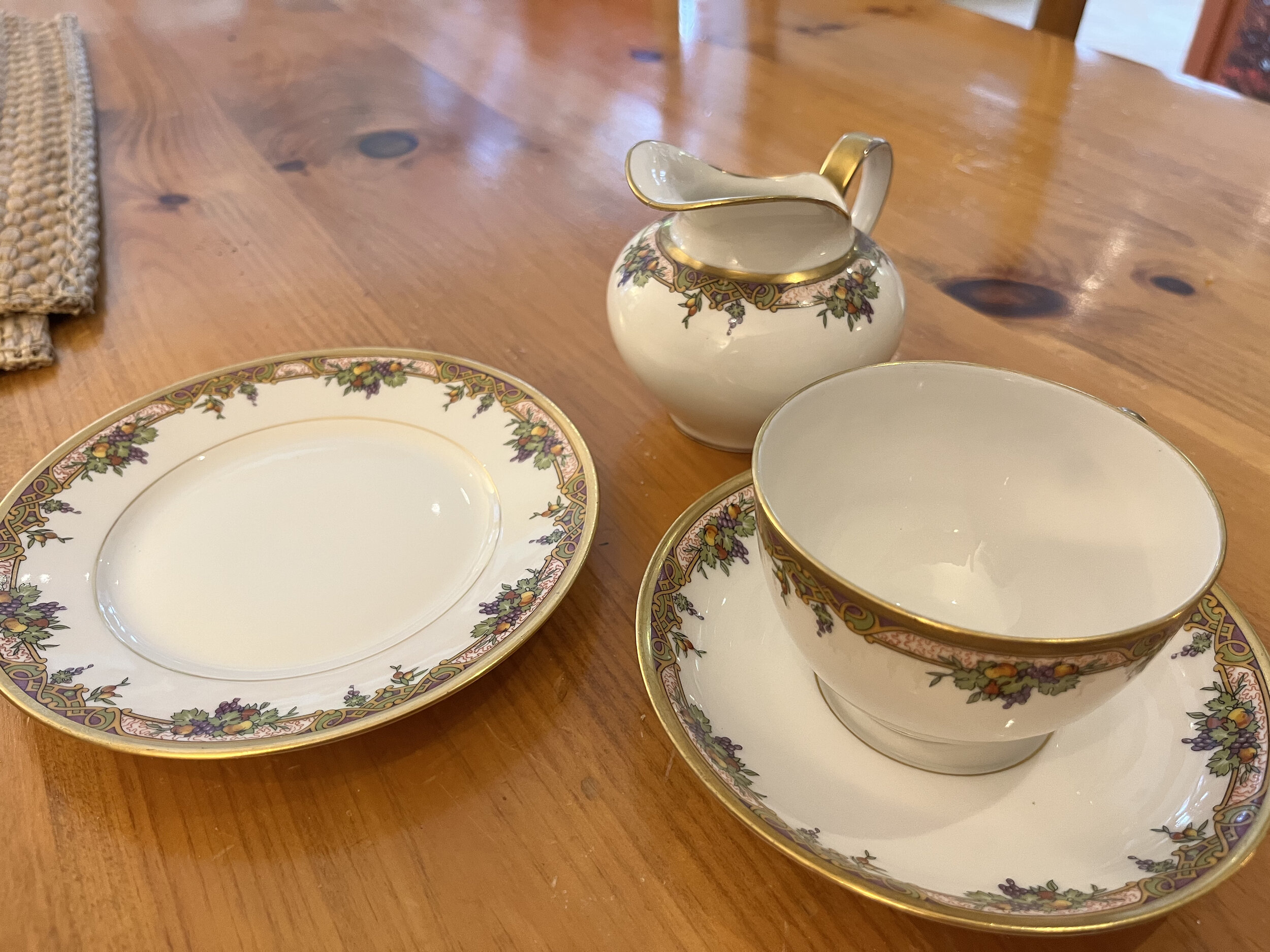Wedding china was never on my registry because there were three sets in the family already. The first was the wedding china given to my grandmother, Margery Richards (née Hooper), in 1928:
It’s called “Rosebud Chintz,” by Copeland, an English china firm. The pattern was popular for brides in the 1920s and has beautiful aspects: all the pieces are fluted china (a more expensive process) and there are thoughtful details such as the sipping view of a small sprig of roses inside the teacup but only if you are right-handed. Grandma Margery loved this set so much she wrapped it carefully, put it in the attic, and never used it again. More about how I came by this set later.
Limoges was a very fancy brand of china made from Kaolin clay in the Limoges region of France. It was originally a wedding gift to my grandmother Ethel Wade (neé Smalley) at her wedding in Calgary, Alberta in the 1910s. She only mentioned her wedding to me once, more specifically her wedding night, about which she whispered, “They don’t tell you anything.” Grandma Ethel died in 2003 at 100 years of age. We got her piano, which nobody plays, because she made me promise not to give it away. The china was passed on to her daughter Phyllis, and then to me. Phyllis will be moving into a nursing home in the next few months, where there is no fancy china, and we are hoping she doesn’t notice.
This set was given to us by Betty Rose (née Hyams) but not handed down. We went with her to William Ashley’s tchotchke shop in Toronto on our twenty-fifth wedding anniversary and picked it out. We paid for the salad plates, however, because Betty thought they were a little over the top.
Grandma Margery’s set was promised to me, I believed, and after she died in 1986 I reminded my mother in a telephone conversation. “I’m not giving it to you,” she said, aghast. “I’m going to sell it.” There were no such things as frank discussions in my family, or Phyllis’, or Ethel’s, so I cried after I hung up the phone. My husband offered to buy it. When I told my mother we would pay for it, she said I could have it. It’s those little memories that give a cup of tea its special flavour.
My daughters couldn’t care less about china, by the way.


